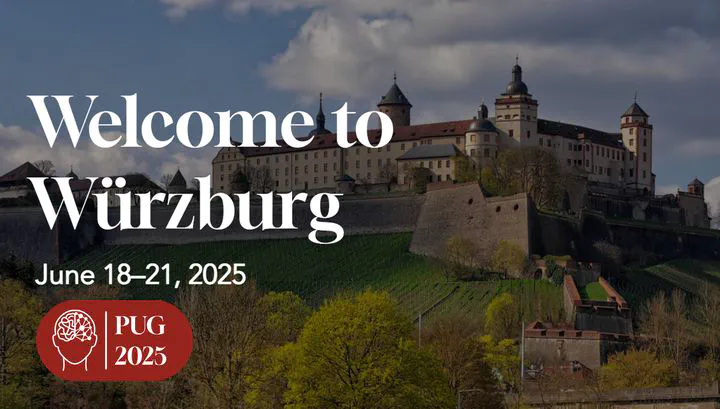PuG 2025 - Poster Presentations on Emotional Speech and Attentional Control in Naturalistic Scenarios
 PuG 2025 - Würzburg
PuG 2025 - WürzburgJulius Maximilian University of Würzburg
Sanderring 2, Würzburg, Bavaria 97070
Poster A 123 – Neural and Pupillary Oscillations of External and Internal Information Processing Modes during Emotional Speech Processing and Visuo-spatial Workload
Abstract:
Our daily lives require attending to and selecting relevant information from multiple sensory streams. Oscillatory brain activity in specific frequency bands enables bottom-up and top-down processing. We examined how emotional speech and visuo-spatial workload co-modulate neural and pupillary activity during simulated driving (N = 48) using MEG and eye tracking. Internal processing (emotional speech) was associated with increases in alpha/beta power, aperiodic slope/offset, and pupillary activity. External processing (high workload) increased gamma/theta power and pupil dilation. Our results suggest distinct internal and external processing modes that flexibly adapt to complex real-world demands.
Authors:
Katharina Lingelbach, Jochem W. Rieger, Christoph S. Herrmann
(Carl von Ossietzky University Oldenburg & Fraunhofer IAO Stuttgart)
📍 Poster Session A | 🗓 June 19, 2025 | 🕐 13:00–14:30
Poster B 281 – Decoding the Neural Basis of Interactions between Emotional Speech Processing and Attentional Control in Realistic Environments
Abstract:
Cognitive load influences emotional distraction. In high-load situations, top-down control reduces interference from emotional stimuli. Using MEG (N = 48), we studied naturalistic emotional speech under varying visuo-spatial workload in a dual-task driving simulation. Univariate analyses showed no interaction effects, but multivariate classification identified distinct neural patterns for emotional and workload conditions (F1 > 0.7). Source projection revealed key regions including the left inferior frontal and orbitofrontal gyrus and anterior temporal lobe. These findings indicate top-down regulation mechanisms that flexibly adapt emotional speech processing to current task demands.
Authors:
Katharina Lingelbach, Jochem W. Rieger
(Carl von Ossietzky University Oldenburg & Fraunhofer IAO Stuttgart)
📍 Poster Session B | 🗓 June 20, 2025 | 🕐 13:00–14:30